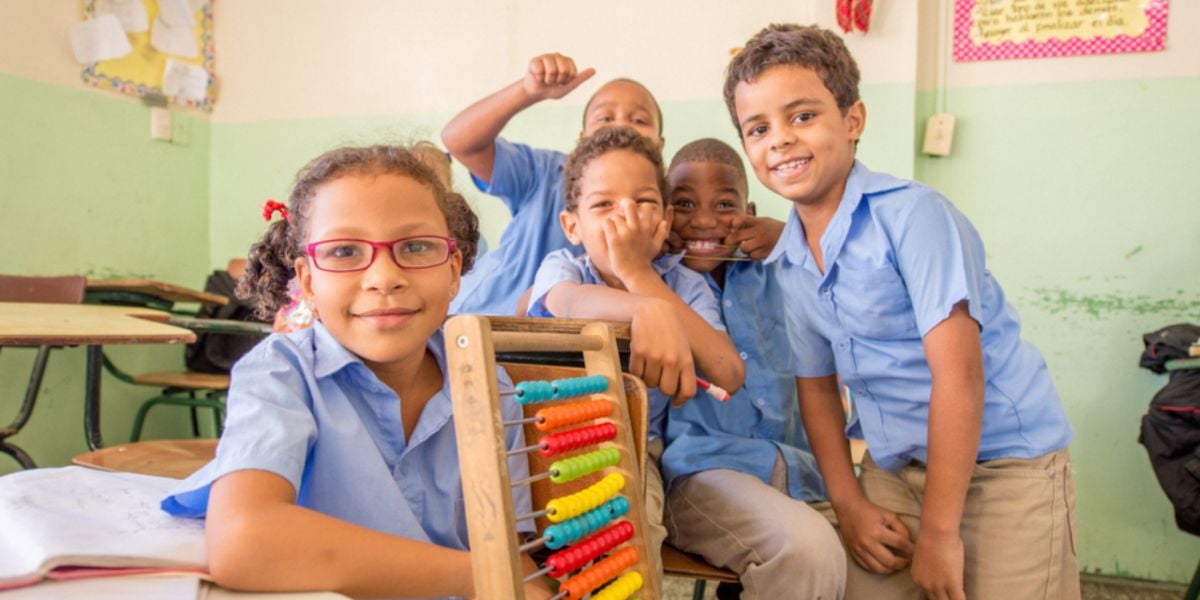
This article will cover the Dominican Republic's educational system, including public schools attended by 80% of the student population, private schools, which wealthier Dominicans and expats attend, and the university system.
Public schools in the Dominican Republic
The state public schools are free, and traditionally, the school begins at 8 am and ends at 12:30 pm for the first round of sessions – that would mean the end of the day for the kids. Then, from 1:00 pm until 6:00 pm, another group would arrive. This is because it traces back to a time when most of the population lived off the land, and youngsters were expected to assist with the livestock and planting. To ensure that parents send their children to school, they just have to go for half a day and then can help at home for the remainder of the day. Ex-President Danilo Medina, on the other hand, decided that in the future, children would attend school for the entire day and be fed breakfast, lunch, and afternoon tea. Not only will this improve their educational level, but it will also allow poorer children to receive better nutrition. As a result, classrooms have doubled, and new schools and classrooms are being built across the country.
The actual president, Luis Abinader, stated that between February 2022 and February 2023, 53 new educational facilities were inaugurated, adding 978 new classrooms to the system, with an investment of over RD 2,760 million. Additionally, maintenance and rehabilitation work has been carried out on 5,800 premises, totaling RD 6,000 million.
Children begin school at the age of five, or nearly six, with class sizes ranging from 15 to 40 students. They then continue until Grade 8, the end of the first school year, when they should be around 14 years old. However, there are exams to pass every year, and if they fail them, they must go to a second round of Pruebas Nacionales, and if they fail again, there is a third round of Pruebas Nacionales. According to Unicef, the repetition rate among more affluent children is 2.3 percent, while it is 8.7 percent among the poorest.
They take national examinations known as the Pruebas Nacionales if they make it to the eighth grade. There are four subjects: Spanish, Mathematics, Social Sciences, and Natural Sciences, with a pass rate of 73%.
This is not a grade that everyone achieves, and it is estimated that only 53 students out of every 100 who begin school complete eighth grade.
They leave for various reasons, and even though school is supposed to be compulsory, many students do not attend. Children must purchase their uniforms, backpacks for their books, notebooks, pencils, and shoes. In the past, some public schools used to charge at least 1 USD for enrollment; however, the new government has prohibited charging any money for enrollment or any other service in the public education system.
They must also pay for their books in some areas, and because the books double as workbooks, they are not reusable and can thus add significant expense. However, the new government provides a virtual library where the public school students can have access to all of the books for free and online.
Aside from those who live nearby, they must pay for transportation, which is usually a motorbike taxi known as a moto concho, although there are free school buses in some areas. Some will also drop out in order to begin working, and it is estimated that 9% of children are involved in some form of child labor, although this tends to be primarily boys and is more prevalent in rural areas than in cities. Some of the girls will drop out if they become pregnant, which is a common occurrence in the Dominican Republic.
Following eighth grade, students complete years 1 to 4 of high school, culminating with the bachillerato examinations, which qualify them for university admission. The bachillerato comprises more tests than the Pruebas Nacionales, including English, French, Civics, and Human Development.
Private colleges in the Dominican Republic
Private Dominican colleges range in price from a few hundred pesos per month to several thousand pesos per month. International schools, which follow a different curriculum, are attended by Dominicans and expat children, with classes typically taught in English, although some teach in both languages. They are by far the most expensive, with annual costs ranging from $5,000 to $10,000. The majority have US-approved programs, and many of the teachers are natural English speakers, while many do not have formal teaching qualifications.
Private colleges, the majority of which are of good quality, may be found in all tourist and expat locations, including Sosuá, Punta Cana, Puerto Plata, Las Terrenas, Juan Dolio, and the main cities of Santo Domingo and Santiago.
Higher education system in the Dominican Republic
The country does have a sophisticated higher education system that offers excellent education through various programs. Furthermore, it has several private universities attended by foreigners, particularly medical and dental programs, many of which are recognized internationally. International students pay higher tuition, and you must remember that you will require a study visa to attend.
The Autonomous Institution of Santo Domingo (UASD), with campuses around the country, is more or less a free state university; in fact, it is the oldest university in the Americas.
Useful links:
Ministry of Higher Education Science and Technology (MESCYT)
We do our best to provide accurate and up to date information. However, if you have noticed any inaccuracies in this article, please let us know in the comments section below.








